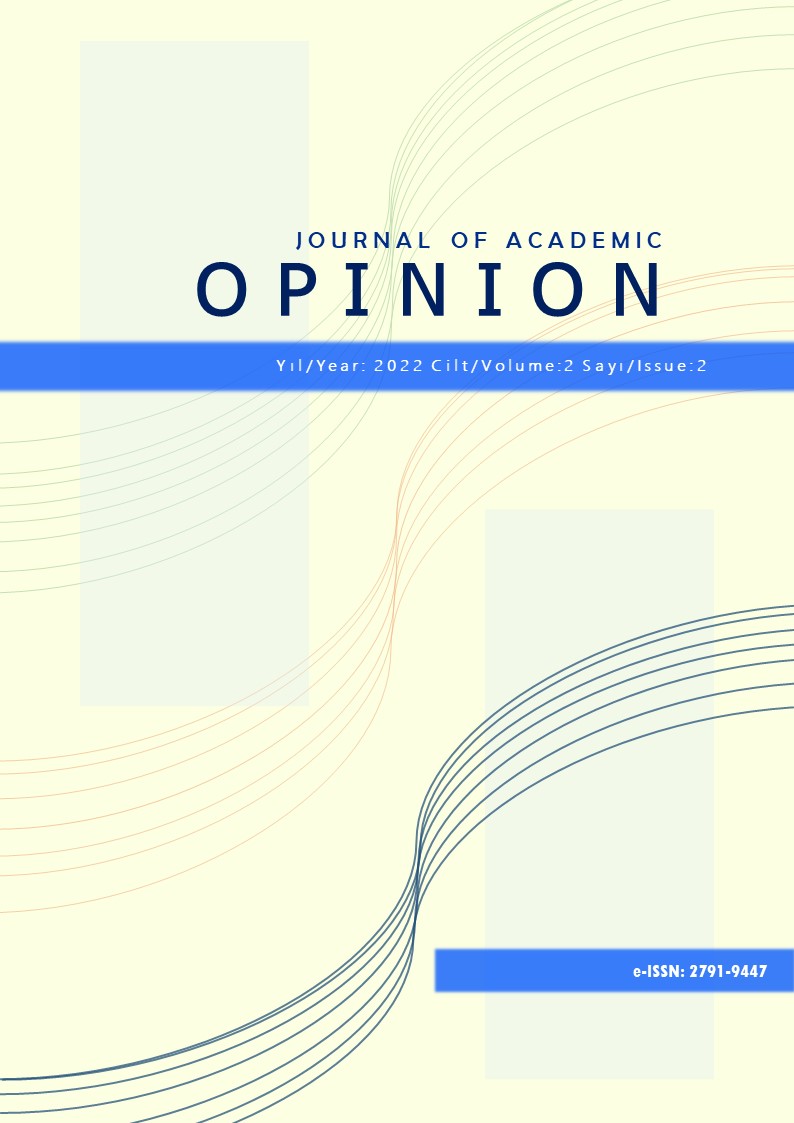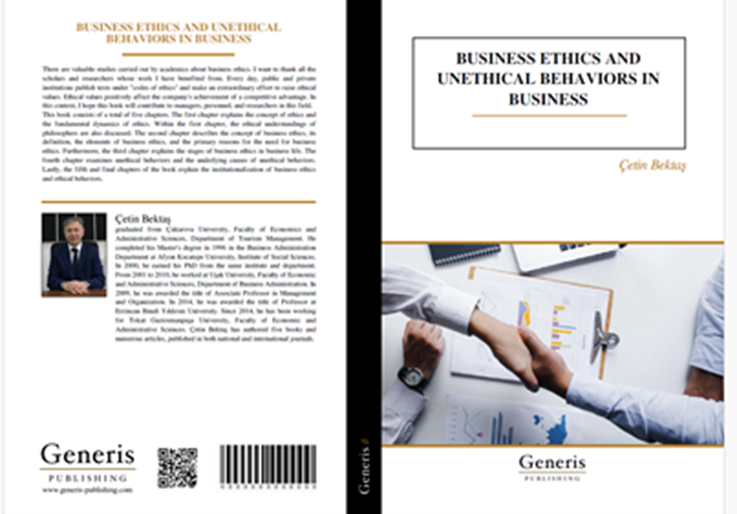The Reflectıon Of The Transformatıons Occurıng In The Consumptıon Structure On The Space Through Shoppıng Centers: The Example Of Sivas
Keywords:
Shopping Centers, Spatial Transformation, SivasAbstract
The reflection of the transformations experienced in the relations of production in the post-1980 period was in the form of the creation of new consumption spaces. These spaces, whose main purpose is consumption, create sub-urban structures in cities and create transformations at the spatial and social level. These consumption spaces, which emerged with the slogan of a new living space, allow activities such as leisure time, socialization, eating and drinking, while at the same time contributing to the reproduction process of the space by transforming the areas in which they are established. These spaces, which are generally established in areas far from the city centers and can be reached by vehicle, quickly attract public and private investments to the areas where they are established and cause these areas to become gentrified. Thus, they trigger spatial segregation within the city. While the modern shopping centers, which caused the traditional texture and lifestyle of the city to gradually wear off, were seen in big cities at first, they have spread rapidly to small cities in recent years and have caused changes in the spatial and social structure. In this study, starting from the consumption concepts, the place of shopping centers, which are the pioneers of consumption culture, in today's society is mentioned, and the effect of shopping centers on urban space is evaluated in the light of the data obtained through observation through the example of Sivas.
References
Algül, A. ve Kamer, H. (2022). Günümüzdeki Tüketim Artışının İslam İktisadı Açısından Eleştirisi. İlahiyat Akademi. 15: 147-166.
Arık, M. B. (2010). Alışveriş Merkezleri Ve “Rasyonel” Büyüme Stratejileri. Akdeniz İletişim Dergisi, 13: 211-233.
Aslan, T.V. (2009). Türkiye’deki Alışveriş Merkezi İncelemelerine Eleştirel Bir Bakış: Yorumlar, Eleştiriler, Tartışmalar, Uludağ Üniversitesi Mühendislik-Mimarlık Fakültesi Dergisi. 14(1): 147-159.
Avcı, İ. (2022). The Effect Of Conspicuous Consumption Behavior On Wasteful Consumption Behavior: The İntermediary Role Of Hedonic Consumption Behavior. Journal of Economy Culture of Society, 65: 161-179.
Aytaç, Ö. (2004). Kapitalizm ve Hegemonya İlişkileri Bağlamında Boş Zaman. CÜ Sosyal Bilimler Dergisi. 28: 115-138.
Aytaç, Ö. (2006). Tüketimcilik ve Metalaşma Kıskacında Boş Zaman. Kocaeli Üniversitesi Sosyal Bilimler Dergisi. 11: 27-53.
Bakır, N. O. ve Aydoğan, S. (2016). Türkiye’de Faaliyet Halindeki Alışveriş Merkezlerinin İncelenmesi. Akademik Sosyal Araştırmalar Dergisi, 4(26): 302-326.
Baudrillard, J. (2008), Tüketim Toplumu: Söylenceleri/Yapıları, H. Deliceçaylı ve F. Keskin (Çev.), 3.Basım, İstanbul: Ayrıntı Yayınları.
Baumann, Z. (1999). The Self In A Consumer Society. The Hedgehog Review. 1(1): 35-40.
Bayhan, V. (2011). Tüketim Toplumunda Bireyin Ontolojik Mottosu: Tüketiyorum Öyleyse Varım. İstanbul Üniversitesi Sosyoloji Konferansları Dergisi, 43: 221-248.
Birol, G. (2003). Evolution of Trade Centres in Relation to Changing Trade Activities. Doktora Tezi, İzmir: İzmir Yüksek Teknoloji Enstitüsü.
Boström, M. (2022). Social Relations And Challenges To Comsuming Less In A Mass Comsupmtion In Society. Sociologisk Forskning, 58(4): 383-406.
Cengiz, E. ve Özden, B. (2002). Perakendecilikte Büyük Alışveriş Merkezleri ve Tüketicilerin Büyük Alışveriş İle Tutumlarını Tespit Etmeye Yönelik Bir Araştırma. Ege Akademik Bakış Dergisi, 2(1): 65-78.
Cohen, L. (1996). From Town Center to Shopping Center: The Reconfiguration of Community Marcetplaces in Postwar America, The American Historical Review, 101(4): 1050-1081
ÇEKUD (2016), Çevre. Tüketim Kültürü. Erişim Adresi: http://www.cekud.org.tr/wp-content/uploads/gazete/gazete-mart-2016.pdf. Erişim Tarihi: (23.04.2022).
Dal, N. E. (2017). Tüketim Toplumu ve Tüketim Toplumuna Yöneltilen Eleştiriler Üzerine Bir Tartışma. Mehmet Akif Ersoy Üniversitesi Sosyal Bilimler Enstitüsü Dergisi. 9(19): 1-21.
De Certeau, M. (2008). Gündelik Hayatın Keşfi I Eylem, Uygulama, Üretim Sanatları. (Lale Arslan Özcan Çev.). Ankara: Dost Yayınları.
Erdoğan, Ö. (2016). Ankara Kentindeki Alışveriş Merkezlerinin Yer Seçim Tercihleri ve Mekânsal Etkileri. Yüksek Lisans Tezi. Ankara: Ankara Üniversitesi Sosyal Bilimler Enstitüsü.
Erin, İ. ve Gönül, T. (2015). Alışveriş Mekânlarının Dönüşümünün Kentsel Mekâna ve Yaşama Etkisi: İstanbul Örneği. Şehir ve Toplum. 2: 129-142.
Fırat, A., Kutucuoğlu, K. Y., Arıkan Saltık, I. ve Tunçel, Ö. (2013). Consuption, Consumer Culture And Consumer Society. Journal of Community Positive Practices, 13(1): 182-203.
Friedmann, J. (1986). The World City Hypothesis. Development and Change. 17: 69-83.
Göcen, G. (2013). İbn-i Haldun’un Toplum ve İnsan Yaklaşımının Günümüze Düşen İzdüşümleri: Tüketim Toplumu ve Narsist İnsan. Toplum Bilimleri Dergisi. 8: 175-198.
Gruen, V. and Smith, L. (1960). The Planning of Shooping Centers. Reinhold Publishing.
İnce, Ş. (2014). Toplumsal ve Kültürel Dönüşümlerin Gündelik Hayata Yansımaları: 2000’lerde Türkiye’nin Mutfağı. Doktora Tezi. Ankara: Ankara Üniversitesi Sosyal Bilimler Enstitüsü.
Kantar, G. (2020). Effects Of Consumption Culture On Lifestyles: Globalization, Media And Consumption Culture In The Context Of “A Bite And A Cardigan Philosophy”. Uluslararası Toplum Araştırmaları Dergisi, 15(23): 2178-2199.
Karakaş, M. (2001). Tüketim Kültürü ya da Tüketimin Yeniden Üretimi. Afyon Kocatepe Üniversitesi İktisadi ve İdari Bilimler Fakültesi Dergisi, 3(1): 11-28,
Köksal Y. ve Aydın, E.E. (2015). Tüketicilerin Alışveriş Merkezleri Algısı Üzerine Karşılaştırmalı Bir İnceleme: Göller Bölgesi Örneği. Uluslararası Yönetim İktisat ve İşletme Dergisi, 11(24): 231-248.
McLeod, S. (2007). Maslow’s Hierarchy of Needs. SimplyPsychology. Erişim Adresi: https://www.simplypsychology.org/maslow.html, Erişim Tarihi: (24.11.2022).
Miele, M. (2006). Consumption Culture: The Case of Food. P. Cloke, T. Marsden, P. Mooney (edt.). in The Handbook of Rural Studies.SAGE Publications.
Nar, M. Ş. (2015). Küreselleşmenin Tüketim Kültürü Üzerindeki Etkisi: Teknoloji Tüketimi. Uluslararası Sosyal Araştırmalar. 8(37): 941-954.
Odabaşı, Y. (1999). Tüketim Kültürü: Yetinen Toplumun Tüketen Topluma Dönüşümü. Birinci Basım. İstanbul: Sistem Yayıncılık.
Özaydın, G. ve Firidin, E. Ö. (2016), Büyük Kentsel Projeler Olarak Alışveriş Merkezlerinin İstanbul Örneğinde Değerlendirilmesi. Mimarlık Dergisi. 347. Erişim Adresi: http://www.mimarlikdergisi.com/index.cfm?sayfa=mimarlik&DergiSayi=361, Erişim Tarihi: 04.05.2022.
Öztürk, M. (2012). Kamusallık, Tüketim Kültürü ve AVM’ler. Kent Sosyolojisi. 600-633.
Parıltı, C. (1999). Maslow’un İhtiyaçlar Hiyerarşisi Kuramında Kendini Gerçekleştirme İhtiyacı. Kamu İş-İş Hukuku ve İktisat Dergisi. 4(4): 267-277.
Pekcan, A. (2003). İhtiyaç Kavramı ve İbn-i’i Haldun’un Umran Teorisi’ne Etkileri. İslami Araştırmalar Dergisi. 16(4): 525-526.
Pirenne, H. (2014). Ortaçağ Kentleri. Ş. Karadeniz (çev.). 13. Baskı.. İstanbul: İletişim Yayınları.
Ritzer, G. (2020). Toplumun Mcdonaldlaştırılması. A. E. Pilgir (çev.). 7. Baskı. İstanbul: Ayrıntı Yayınları.
Roach, B., Goodwin, N. and Nelson, J. (2019). Consumption And The Consumer Society. Global Development and Environment Institute, Tufts University.
Sassen, S. (2007). Global City. D. Nugent, and J. Vincent (edt.). in A Companion to the Anthropology of Politics. Blackwell Publishing.
Sennett, R. (2010). Kamusal İnsanın Çöküşü. S. Durak ve A. Yılmaz (çev.). İstanbul: Ayrıntı Yayınları.
Trivedi, A. J. ve Mehta, A. (2019). Maslow’s Hierarchy Of Needs – Theory Of Human Motivation. International Journal of Research in all Subjects in Multi Languages. 7(6): 38-41.
Utma, S. (2020). Türk Toplumunda Tüketim Kültürünün Yaygınlaşmasında Medyanın Rolü: Tüketiyorum Öyleyse Varım. Uluslararası Sosyal Araştırmalar Dergisi. 13(74): 484-491.
Üstün, B. ve Tutal, O. (2008). Tüketim Alışkanlıklarındaki Değişimler ve Bu Değişimlerin Alışveriş Mekânlarına Etkisinin
Downloads
Published
How to Cite
Issue
Section
License
Copyright (c) 2022 Journal of Academic Opinion

This work is licensed under a Creative Commons Attribution 4.0 International License.





